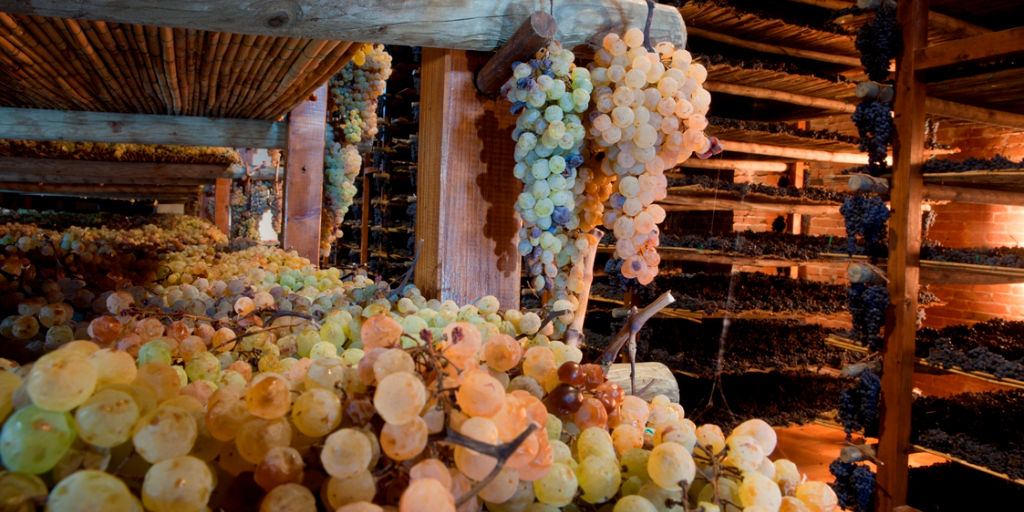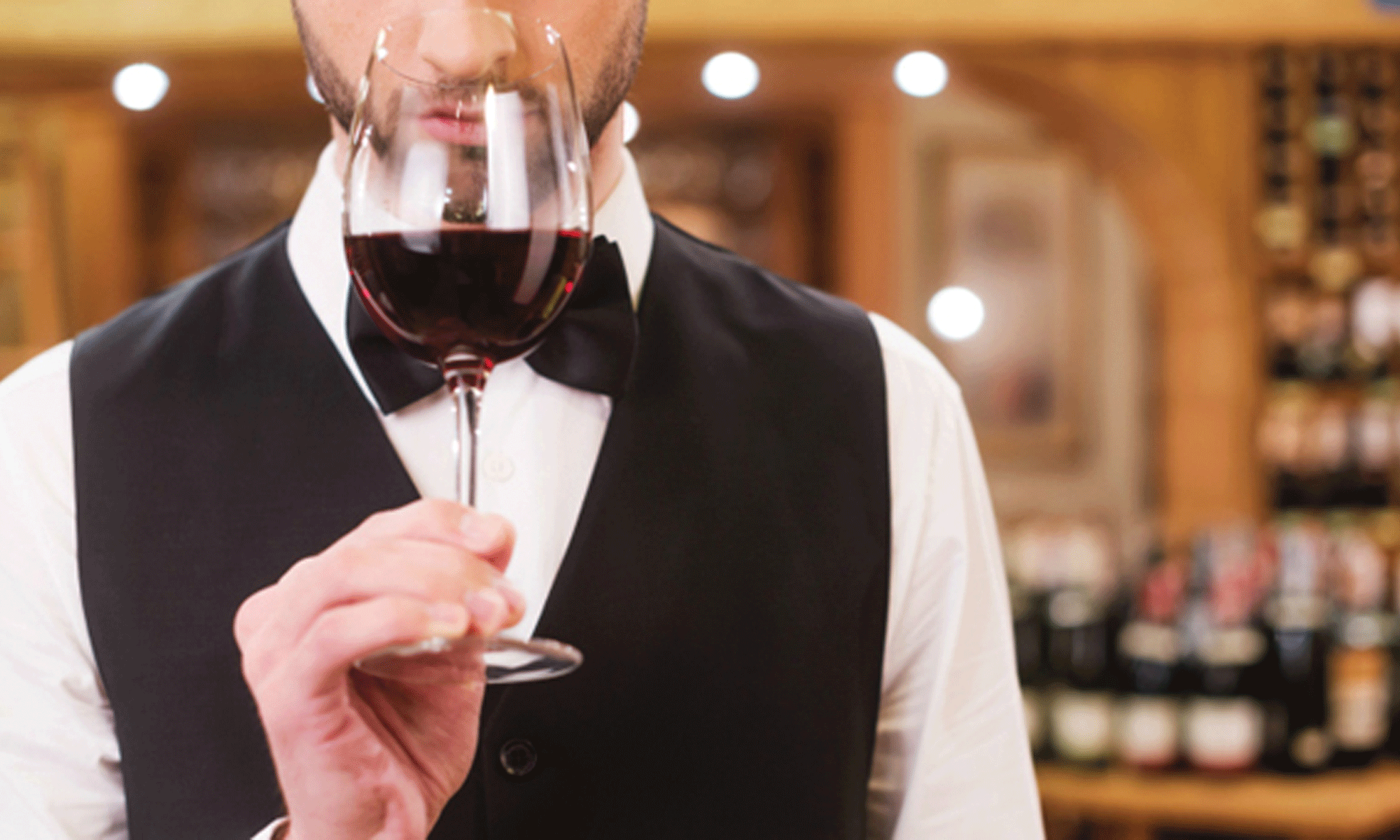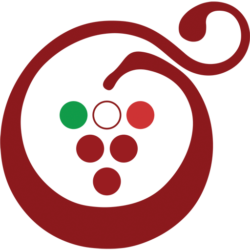
Some notes on the history of wine.
More often we hear about admirable archaeological discoveries about the oldest wine: the one most referred to dates to 6100 BC, placing its “invention” in Georgia.
Certainly, the wine is even older than this date. However, the purpose of this narrative is not to deepen the details of the history of wine but only to underline some interesting points.
There is a substantial difference between Palaeolithic wine (from about 2.5 million to 10,000 years ago) and Neolithic wine (from about 8,500 to 4000 BC), such as between pre-history and history. In the Palaeolithic age for the first-time man and vine met (Eurasian wild vine, Vitis vinifera subspecies Sylvestris, ancestor of the domestic species), this phase is characterized by a causal production of wine, linked to limited availability and seasonal harvest. In the Neolithic age, we witness the birth of agriculture and therefore also the domestication of the vine: it is in this second phase that happened the necessary conditions for the invention of viticulture and the intentional production of wine.
Patrick McGovern’s book, “Ancient Wine: The Search for the Origins of Viniculture”, is one the most authoritative scientific introduction to the study of wine. Archaeology, in fact, together with geology, archaeobotanical, molecular chemistry, are able to provide useful tools to investigate the beginnings of viticulture, sometimes forgotten by wine historians who often entrust their study only to literature sources and ancient text alone.
Wine needed containers to be transported, served and drunk, On these vessels, McGovern focuses his attention during his research, age after age and culture after culture. Thanks to the study of the residues present in ancient jars, cups, wineskins and amphoras it is possible to establish whether a container contained ancient wine: the presence of tartaric acid or its salts, if fermentation occurred, intentional attempts to eliminate oxygen infiltrations, additions of tree resins, etc.
The history of wine is a journey through time and ancient cultures traced from the expansion of the domesticated vine, which developed throughout the Bronze and Iron Age up to the affirmation of the cultures of the Greeks and Romans. Wine declined during the Middle Ages, it was saved by the monks, then it becomes an aristocrat again and finally the popular drink of today. Between sacred and profane it is a fascinating tale, let me mention some aspects that I find interesting.
The Roman Empire has the merit of having spread the vine in continental and Atlantic Europe – perhaps one of its highest points. In the year 64 AD, the Roman emperor Nero estimated that 140 types of wines were produced and available in Rome.
Another Roman emperor, Domitian – due to an excess of wine produced in the occupied territories and a wheat famine – was responsible for the first law restricting the cultivation of vines.
This was only the beginning of the great crisis of agriculture and viticulture that will worsen until the collapse of the Western Roman Empire. The crisis became unstoppable: the small property is replaced by the large estate latifundium, the descent of the barbarians, the wars and plagues, the depopulation of the countryside. In the Ostrogoth age, the medieval vineyard has been relegated to orchards and cloisters, often within the city walls.
By now it has perhaps reached one of its lowest points, wine assumes the liturgical function and so it is saved. The rebirth of medieval viticulture coincides with the expansion of Christianity and with the symbolism that linked sacramental wine to the sacrifice of Mass.
In this period, we note the expansion of viticulture towards northern Europe, as far as England, both for religious reasons and for the occurrence of a favourable climatic phase. To this northern diffusion corresponds a progressive shrinkage of the vine in the Mediterranean areas due to the expansion of the Islamic religion.
Viticulture returned to be an important economic activity in the Carolingian age, during which the vine, as well as being once again cultivated in the open countryside, became the protagonist of the deforestation and reclamation works carried out by monastic orders, Benedictine in the first place. Between 950 and 1100 AD, the ratio of vine plants to tree plants went from 1 to 1 to 3 to 1.
Fast forward to the Renaissance age, wine became aristocratic again, always present in every court, often referred to as “wine of the kings”.
In 1498 Leonardo Da Vinci was gifted by the Duke of Milan a small 2.5 acres vineyard: as well as being a scientist, a painter, an inventor, he was also a winemaker. Besides, the exact parcel has been re-created today and it is one of the very few big cities urban vineyards.
Dom Pérignon, a Benedictine monk, was an important pioneer for Champagne, he contributed with a number of winemaking techniques around 1670.
In 1716 the world first wine appellation of origin was born. Created by Cosimo III de’ Medici, Grand Duke of Tuscany, the edict gave recognition to 4 wine regions (including the famous Chianti region), clearly marking the borders of the areas.
In 1885 the best-known appellation system – the Bordeaux Wine Classification – resulted from the Exposition Universelle de Paris, when Emperor Napoleon III requested a classification system for France’s best Bordeaux wines. Brokers from the wine industry ranked the wines according to a château’s reputation and trading price, which at that time was directly related to quality.
At the end of 1800s, the phylloxera disease almost extinguished the European vineyard, changing the history of the vine and wine.
But once again the wine is reborn, regains strength and assumes a bourgeois status. In the 1900s it became a commercial product.
Today wine is a popular drink all around the world, in 2021 the wine market valued over 245 billion € and it was put in almost 25 billion bottles.
Why is wine connected to religion?
The ancients already knew the disinfectant, analgesic and medicinal properties of wine. Not only to cure the suffering of the body but it was also known that wine gave joy and consolation. For this reason, very early on, getting drunk was already considered bad taste by the Greeks.
The tangible and apparently supernatural power of wine must have amazed the first men, who immediately associated it with the religious context, and it remained so until the Middle Ages.
Among the ancient Sumerians, wine, alongside beer, was particularly appreciated and was a symbol of celebration and homage to the gods.
In the Old Testament, wine was considered the symbol of all gifts from God, it was the drink of life.
For two of the three main today monotheistic religions, Christianity and Judaism, wine has fundamental importance. For the third, Islamism, alcohol must be avoided.
Wine therefore plays a prestigious role in the Jewish religion: in the Old Testament we find many testimonies relating to the spread of viticulture. The First Book of Genesis, in the Bible, talks about the spread of viticulture in Egypt during the exile of the Israelites. The myth says that Noah was the first man to plant the vine.
The Greeks were polytheists, they believed in numerous powerful and immortal gods who had the faculty to intervene in human life to hinder it or to facilitate it. Dionysus, son of Zeus and Semele, is considered the God of wine and the one who introduced the cultivation of the vine among men. Dionysus was also an object of worship in the Etruscan world, where he was called Fufluns, and in the Roman world (before the advent of Christianity) where he was called Bacchus.
Even in Christianity wine is of fundamental importance, especially in the sacred ceremonial of the mass, during the blessing, in which the last supper of Jesus is remembered and the wine takes on a unique role, as it becomes the blood of Christ. Wine is also identified as the “drink of salvation” and the importance of this drink for the Christian religion is demonstrated by the fact that the term “wine” appears 224 times in the Bible.
In the Middle Ages the vineyards were almost extinct and they were rescued by their religious function. Christianity and the need for wine in religious rituals together with hundreds of monasteries spreading throughout central Europe were fundamental to maintaining alive the use of wine in that time.
In the early Church, both priests and participants received the consecrated wine by drinking from the chalice, after receiving a portion of the consecrated bread. Due to many factors, including the difficulty of obtaining wine in Northern European countries where the climate was unsuitable for viticulture, drinking from the chalice became largely restricted in the West only to the celebrating priest, while others received communion only in the form of bread. To remark the scarcity of wine, consecrated wine was even prohibited to mass participants in 1415 AC.
Another anecdote is interesting to underline the importance of the monks for the diffusion of wine in the Middle Ages. The Rule of Saint Benedict is a book of precepts written in 516 AD by Benedict for monks living communally under the authority of an abbot. The spirit of Saint Benedict’s Rule is summed up in the motto of the Benedictine Confederation: pax (“peace”) and the traditional ora et labora (“pray and work”). Chapters 39 & 40 regulate the quantity and quality of the food: “2 meals a day are allowed, with 2 cooked dishes at each meal. Each monk is allowed a pound (450g) of bread and a quarter litre of wine. The flesh of four-footed animals is prohibited except for the sick and the weak“.
Why does wine enjoy a good reputation today?
Vine and wine accompany the cultural evolution of man and society. To understand why wine has always distinguished itself obtaining a renowned status, we need to get to the origins of this relationship: this has been the easier and faster way to obtain – in the West – ethyl alcohol, the most effective drug of all time.
An analgesic, a disinfectant, a healing solution, in addition to providing natural compounds (endorphins) with pleasant effects on the brain: this is wine. So we understand its strong function as a social lubricant that facilitates relationships with others.
The tangible and apparently unearthly power of wine must have amazed the first men, who immediately associated it with the religious context, and remained so until the Middle Ages. [2]
With Renaissance wine became aristocratic, always present in every court, “wine of the king”. Then bourgeois and commercial, today is a popular drink all around the world (wine market value over 245 billion € and almost 25 billion bottles)
breve storia del vin santo
Il vino dell’antichita era dolce?
The taste of wine in ancient Roman times
https://www.guadoalmelo.it/en/the-taste-of-wine-in-ancient-roman-times/
https://www.cantinegulino.it/la-riscoperta-dei-vini-dolci-tra-passato-e-presente/
La millenaria storia dei Vini Dolci, perle fin dall’Antichità
I consigli che seguono riguardano soprattutto indicazioni di “condimenti” da aggiungere al vino (resina, acqua di mare, ecc.) per la conservazione del vino. Ricordiamo che comunque i vini dell’antichità erano ben diversi da quelli odierni. I problemi di vinificazione facevano sì che presentassero gusti che oggi consideriamo difetti. L’uso comune di servirli miscelati con acqua, aromi, spezie, miele e tanto altro serviva appunto a coprire e correggere questi problemi inevitabili.

